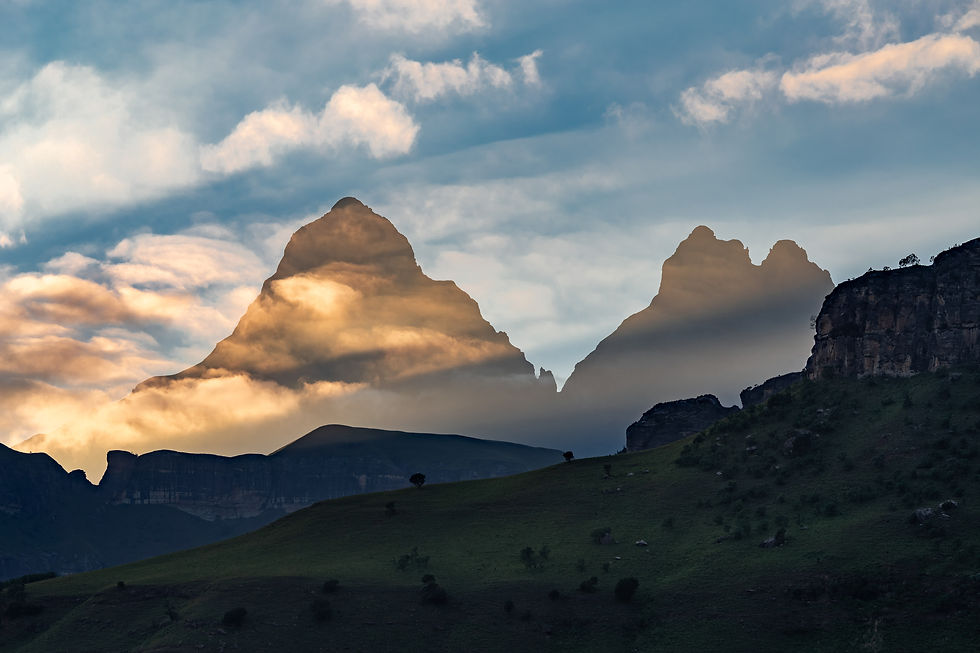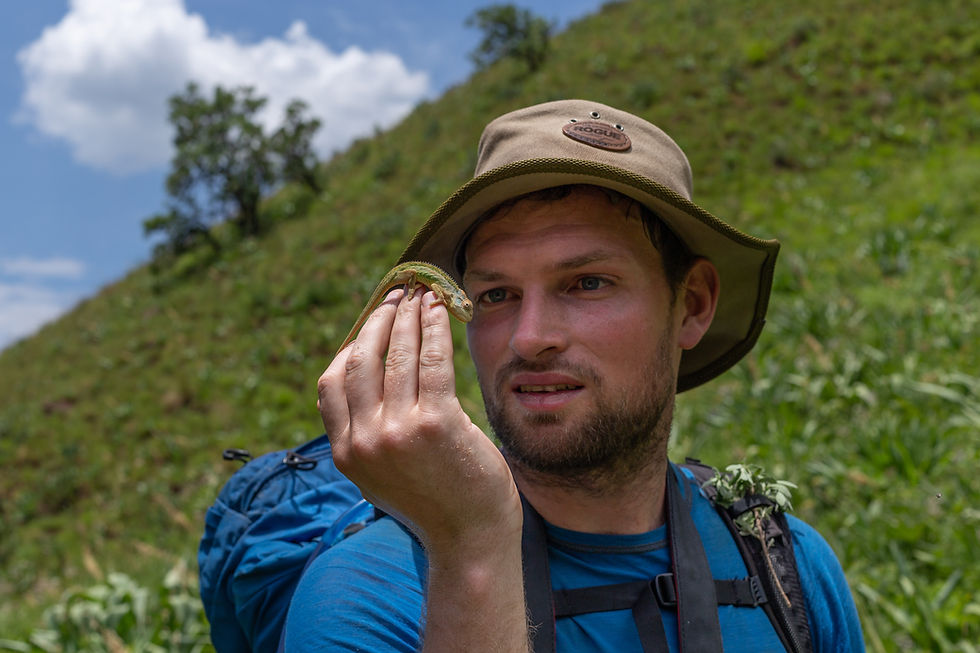Drakensberg Mnweni Valleys
- Janik Alheit

- May 23, 2019
- 4 min read
In November of 2018, I was invited by a friend and fellow photographer, Alex Nail , to go explore the lower regions of the Drakensberg for a week. Alex had a workshop group the week before, and the idea was for us to go explore the Mnweni region in the week after his workshop ended. If you know me then you will know that I don't pass up an opportunity to explore wild places, especially the Drakensberg. So I called up another friend of mine, Ruan Bekker , and asked him if he would like to join us on the week long adventure.
After flying from Cape Town to Johannesburg and then driving down to the Berg, we met up with Alex at the Mnweni Cultural and Hiking Centre at the foothills of the mountain. This is a well known starting point for hikes in the Berg, as it offers decent accommodation and is fairly close to the start of the trails in the area. As it goes with these kind of trips, when you first arrive in the area you are starving for some photography action just to warm up the gear, before the actual adventure starts. As fate would have it, we were treated to a classic thunderstorm on the mountain during sunset and we had a perfect view from our accommodation, so we jumped at the opportunity to hopefully capture a lightning strike on the mountain. I set up a timelapse in the general direction of the mountain and hoped for the best. Out of the hundreds of frames that I shot, I managed to capture some lightning bolts hitting the escarpment in a few frames, what a way to start the trip!


The next morning we met up with our two guides, Vusi and Jeffrey, and packed our bags and took a drive up to the start of the trail on the back of a local's "bakkie(truck)". The hike starts off pretty flat as you make your way into the foothills, following the winding Mnweni river.

Along the way we ran into some local shepard boys and their dogs as they were herding their cattle up the mountain slopes to fresh grazing areas.


Halfway into our hike for the day we reached a part of the river where there is a nice natural swimming hole. Naturally we jumped at the opportunity to get out of our sweaty clothes and into the fresh water for a relaxing swim before we took on the second half of the day's hike.

After a few more hours of hiking, we eventually reached the bottom of the Ifidi valley, where we would set up camp for the night. The flat grassy area was perfect for camping, but the area was a challenge in terms of photography. We scouted quite a bit before we each settled on a few compositions that could work. Sunset turned into a very gloomy scene with medium level clouds covering most of the escarpment, making our jobs even harder.


Morning came and the clouds on the mountain had disappeared over night, revealing the rocky escarpment during sunrise. We were hoping for some high cloud to add some color to the scene, but we were happy to at least have some light on the mountain.



We packed up camp after sunrise and headed towards the next camping location, the Mbundini Abbey, one of the wildest areas I have ever had the privilege of visiting. The walk was fairly long and flat, until we got to the last bit of the hike where you go up the valley next to the river. This was by far the most interesting part of the hike as you trek through lush Yellowwood forests and small streams that make the areas seem almost fantasy-like.



We arrived in time for sunset, but unfortunately the light just wasn't anything special so we decided to rather spend our time timelapsing a thunderstorm brewing behind the Mnweni Needles in the far distance. The storm lasted into the evening and turned out to be quite the show! In fact, I took one of my luckiest photos ever during that time, something I don't believe has ever been photographed properly in the Drakensberg, but that is a story I'm saving for another day...


Sunrise in this location usually produces incredible light on the escarpment and there are tons of foregrounds to capture, with the most well known being the small waterfall right next to camp. I wasn't happy with the other foregrounds, so I ended up shooting the "classic" shot at sunrise. Unfortunately the river wasn't running very strong that day, which made the composition even more tricky. At the end I managed to capture a shot that I'm happy with, given the conditions we had. Soon after the sun came up, an inversion formed at the foot of the mountain, bringing an end to our sunrise shoot.




The next day we started making our way back down the river to our last camping spot, before we would head back home. On our hike back we crossed a section of the mountain where you had panoramic views of the whole Mnweni area and we all felt very inspired and decided to camp there for the night. Seeing as it was only around noon when we reached this spot, we decided to head down to the river for the day and hike back up for sunset to set up camp. The day was filled with swimming and lounging around by the river, and of course some daytime long exposure photography.




Sunset didn't produce any good light really, so we decided to call it a night and get some rest before sunrise. The morning arrived and we were once again greeted by clear skies, meaning that we would have no color in the sky and would have to work hard for decent shots. Luckily there were a lot of protea trees in the area and I used them as subjects in my foreground to make the scene more interesting.


This would be our last morning on the mountain and we packed our bags and started the journey back the the Mnweni Cultural and Hiking Centre. The walk back was filled with thoughts of the past few nights in some of the wildest places I've ever been, adventures with friends, long nights filled with storytelling and laughter, challenging photographic conditions that taught me a few good lessons, and plans to return to the mountain as soon as possible!

Comments